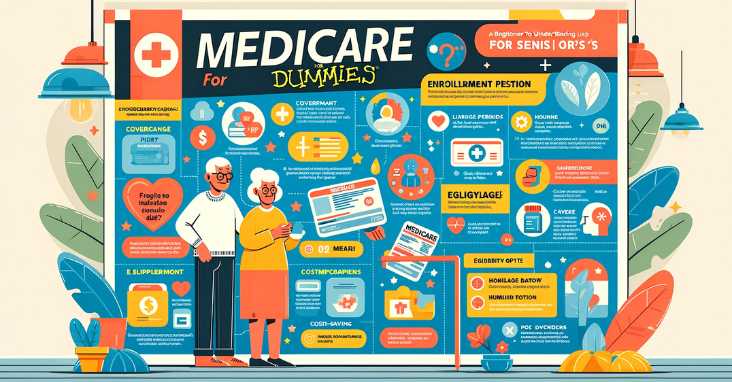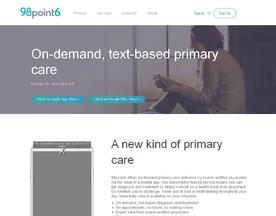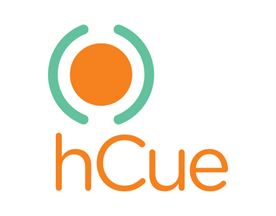What is medicare for dummies and healthcare coverage? Medicare healthcare coverage is a U.S. federal program providing medical insurance. It includes hospital (Part A), medical (Part B), and drug coverage (Part D), along with optional Advantage Plans (Part C) offering additional benefits.
Medicare can be a complex and confusing topic, especially for those who are not familiar with the healthcare industry. Medicare for Dummies is a guide that breaks down the basics of Medicare in an easy-to-understand way. This guide is designed to help individuals understand the different parts of Medicare, what is covered, and how to enroll.

Understanding Medicare Basics is the first step in navigating the complex world of healthcare. Medicare for Dummies explains the different parts of Medicare, including Part A, Part B, Part C, and Part D. This guide also covers the eligibility requirements for each part and the enrollment process. By understanding the basics of Medicare, individuals can make informed decisions about their healthcare coverage.
Medicare Coverage Details is another important topic covered in this guide. Medicare for Dummies explains what is covered under each part of Medicare, including hospital stays, doctor visits, prescription drugs, and more. This guide also covers the different types of healthcare providers that accept Medicare, such as doctors, hospitals, and nursing homes. By understanding the details of Medicare coverage, individuals can make informed decisions about their healthcare needs.
Key Takeaways
- Understanding the basics of Medicare is crucial for making informed decisions about healthcare coverage.
- Medicare coverage details can be complex, but it’s important to understand what is covered under each part of Medicare.
- Enrolling in Medicare can be confusing, but Medicare for Dummies can help simplify the process.
For more information about Medicare, visit the official Medicare website
Understanding Medicare Basics
What Is Medicare?
Medicare is a federal health insurance program designed to help people aged 65 or older, people with disabilities, and those with end-stage renal disease. The program is administered by the Centers for Medicare & Medicaid Services (CMS) and is funded by taxes and premiums paid by beneficiaries.
Different Parts of Medicare
Medicare has four parts: Part A, Part B, Part C, and Part D.
- Part A covers inpatient hospital care, skilled nursing facility care, hospice care, and home health care.
- Part B covers doctor visits, outpatient care, preventive services, and medical equipment.
- Part C, also known as Medicare Advantage, is an alternative to Original Medicare (Part A and Part B) and is offered by private insurance companies. It includes all benefits covered by Original Medicare, as well as additional benefits such as dental, vision, and hearing.
- Part D covers prescription drugs.
Eligibility and Enrollment
To be eligible for Medicare, you must be a U.S. citizen or permanent legal resident who has lived in the U.S. for at least five years. You are eligible for Medicare if you are:
- 65 or older
- Under 65 with certain disabilities
- Any age with end-stage renal disease (ESRD) or amyotrophic lateral sclerosis (ALS)
You can sign up for Medicare during the Initial Enrollment Period (IEP), which is a seven-month period that starts three months before the month you turn 65 and ends three months after the month you turn 65. If you miss your IEP, you can sign up during the General Enrollment Period (GEP), which is from January 1 to March 31 each year. However, you may have to pay a late enrollment penalty.
There are also Special Enrollment Periods (SEPs) that allow you to sign up for Medicare outside of your IEP or GEP if you meet certain criteria, such as losing employer-sponsored health coverage.
It is important to understand the different enrollment periods and eligibility requirements to ensure you receive the appropriate coverage. You can learn more about Medicare and its coverage options on the official Medicare website or by speaking with a licensed insurance agent.
Here is the official Medicare website for more information.
Medicare Coverage Details
Medicare is a federal health insurance program for people who are 65 or older, certain younger people with disabilities, and people with End-Stage Renal Disease (ESRD). Medicare has four parts: Part A, Part B, Part C, and Part D. Each part covers different services.
Hospital and Medical Insurance
Part A, also known as hospital insurance, covers inpatient hospital stays, skilled nursing facility stays, home health care, and hospice care. Part B, also known as medical insurance, covers doctors’ services, outpatient care, medical supplies, and preventive services.
Medicare Advantage Benefits
Medicare Advantage plans, also known as Part C, are offered by private insurance companies that are approved by Medicare. These plans provide all of the benefits of Part A and Part B, and some plans also offer additional benefits such as vision, hearing, and dental services.
Prescription Drug Coverage
Part D, also known as prescription drug coverage, helps cover the cost of prescription drugs. Medicare-approved private insurance companies offer this coverage.
Additional Services and Equipment
Medicare also covers additional services and equipment, such as medical equipment and vaccines. Some of these services may require prior authorization from Medicare.
It is important to note that Medicare coverage can vary based on where you live and the specific plan you choose. It is recommended to review your coverage options and compare plans to make an informed decision. The official Medicare website provides a wealth of information on coverage details and plan options.
Costs and Financial Considerations
When it comes to Medicare, understanding the costs and financial considerations is crucial. In this section, we will discuss the various costs associated with Medicare and how to manage them.
Understanding Premiums and Deductibles
Medicare is not free, and there are premiums and deductibles associated with each part. Part A is generally free for most people, but there are deductibles and coinsurance costs associated with it. Part B requires a monthly premium, which is income-adjusted, and there is also an annual deductible.
Medicare Advantage Costs
Medicare Advantage plans are an alternative to traditional Medicare, and they often have lower monthly premiums. However, they may have higher out-of-pocket costs, such as copays and coinsurance. It is important to understand the costs associated with Medicare Advantage plans before enrolling.
Medigap and Supplemental Coverage
Medigap plans, also known as Medicare Supplement Insurance, can help cover the out-of-pocket costs associated with traditional Medicare. These plans are sold by private insurance companies and can vary in cost. It is important to compare plans and costs before choosing a Medigap plan.
Managing Out-of-Pocket Expenses
Even with Medicare coverage, there may still be out-of-pocket expenses. It is important to budget for these costs and consider options such as Health Savings Accounts (HSAs) or other supplemental coverage. It is also important to take advantage of preventive services, as they are often covered at no cost.
To learn more about Medicare costs and financial considerations, visit Medicare.gov.
Enrollment and Plan Choices

Medicare is an insurance program that provides health coverage to people who are 65 years or older, as well as to those who have certain disabilities or medical conditions. There are several enrollment periods and plan choices that beneficiaries should be aware of to ensure they get the coverage that best suits their needs.
Initial Enrollment and Deadlines
The initial enrollment period for Medicare begins three months before an individual’s 65th birthday and ends three months after their 65th birthday. During this time, beneficiaries can enroll in Medicare Part A and Part B, as well as Medicare Advantage and Medicare Part D plans. It is important to enroll during this period to avoid late enrollment penalties.
If a beneficiary misses their initial enrollment period, they can enroll during the general enrollment period, which runs from January 1 to March 31 each year. However, they may be subject to late enrollment penalties.
Comparing Medicare Plans
There are several Medicare plans available, including Original Medicare, Medicare Advantage, and Medicare Part D. Beneficiaries should compare these plans to determine which one best meets their needs.
Original Medicare includes Part A (hospital insurance) and Part B (medical insurance). Medicare Advantage plans, also known as Part C, are offered by private insurance companies and provide all the benefits of Original Medicare, as well as additional benefits such as vision, dental, and hearing coverage. Medicare Part D provides prescription drug coverage.
Beneficiaries can compare Medicare plans using the Medicare Plan Finder tool on the official Medicare website. This tool allows beneficiaries to compare plans based on their location, medications, and other factors.
Changing Plans and Coverage
Beneficiaries can change their Medicare coverage during the annual enrollment period, which runs from October 15 to December 7 each year. During this time, beneficiaries can switch from Original Medicare to a Medicare Advantage plan, switch from one Medicare Advantage plan to another, or switch from one Medicare Part D plan to another.
Beneficiaries can also make changes to their coverage during a special enrollment period, which is available to those who experience certain life events such as moving or losing employer-sponsored health coverage.
It is important for beneficiaries to review their Medicare coverage annually to ensure they have the most appropriate plan for their needs.
For more information on Medicare enrollment and plan choices, visit the official Medicare website
Medicare for Specific Situations

Medicare is a federal health insurance program that provides coverage for individuals who are 65 or older, people with disabilities, and those with end-stage renal disease. However, there are specific situations where Medicare coverage can be confusing. This section provides an overview of Medicare coverage for specific situations.
Coverage for Disabilities and Special Conditions
Medicare provides coverage for people with disabilities, including those who are under 65 years old. Individuals who have received Social Security Disability Insurance (SSDI) for 24 months are eligible for Medicare coverage. Medicare coverage for people with disabilities includes hospital insurance (Part A), medical insurance (Part B), and prescription drug coverage (Part D).
Medicare While Working Past 65
If an individual is still working at age 65, they may choose to delay enrolling in Medicare. However, if they work for a small employer, they may need to enroll in Medicare to avoid a gap in coverage. In some cases, an individual may be able to keep their employer’s health insurance coverage and enroll in Medicare.
Medicare and Other Insurance
If an individual has other insurance, such as group health insurance through an employer, Medicare may be the primary or secondary payer. It is important to understand how Medicare coordinates with other insurance to ensure that an individual receives the maximum benefits available.
Traveling with Medicare
Medicare coverage is limited when traveling outside of the United States. However, there are some situations where Medicare may provide coverage, such as in emergency situations. It is important to understand the limitations of Medicare coverage when traveling and to consider purchasing additional travel insurance.
For more information on Medicare coverage for specific situations, visit the official Medicare website
Frequently Asked Questions

What are the basic components of Medicare and how do they function?
Medicare is divided into four parts: Part A, Part B, Part C, and Part D. Part A covers hospital stays, skilled nursing care, hospice care, and home health care. Part B covers doctor visits, outpatient care, and medical equipment. Part C, also known as Medicare Advantage, is an alternative to traditional Medicare that includes Parts A and B coverage and often includes additional benefits such as dental and vision. Part D covers prescription drugs.
How does one become eligible for Medicare and what are the enrollment requirements?
Most people become eligible for Medicare at age 65, but eligibility can also be based on disability or certain medical conditions. To enroll in Medicare, individuals can apply online, by phone, or in person at a Social Security office. There are specific enrollment periods, and it is important to enroll during the appropriate time to avoid late enrollment penalties.
Can you explain the advantages and potential disadvantages of enrolling in Medicare?
The advantages of enrolling in Medicare include access to affordable healthcare and prescription drug coverage. However, there are potential disadvantages such as limited coverage for certain services and the cost of premiums, deductibles, and copayments. It is important to carefully consider the costs and benefits of Medicare before enrolling.
What are the most recent updates or editions to the Medicare for Dummies guide?
The most recent edition of Medicare for Dummies was published in 2021 and includes updates on changes to Medicare coverage and enrollment requirements.
How can I find a comprehensive summary or cheat sheet for understanding Medicare?
The Centers for Medicare & Medicaid Services (CMS) provides a comprehensive guide to Medicare on their website. Additionally, the Medicare for Dummies guide includes a cheat sheet with key information and terms.
Are there any simplified training resources or books for beginners to learn about Medicare?
The Medicare for Dummies guide is a great resource for beginners, but there are also other books and training resources available. The National Council on Aging offers free online courses and webinars on Medicare, and the AARP provides a range of resources and information for Medicare beneficiaries.
For more information on Medicare, visit the official Medicare website















